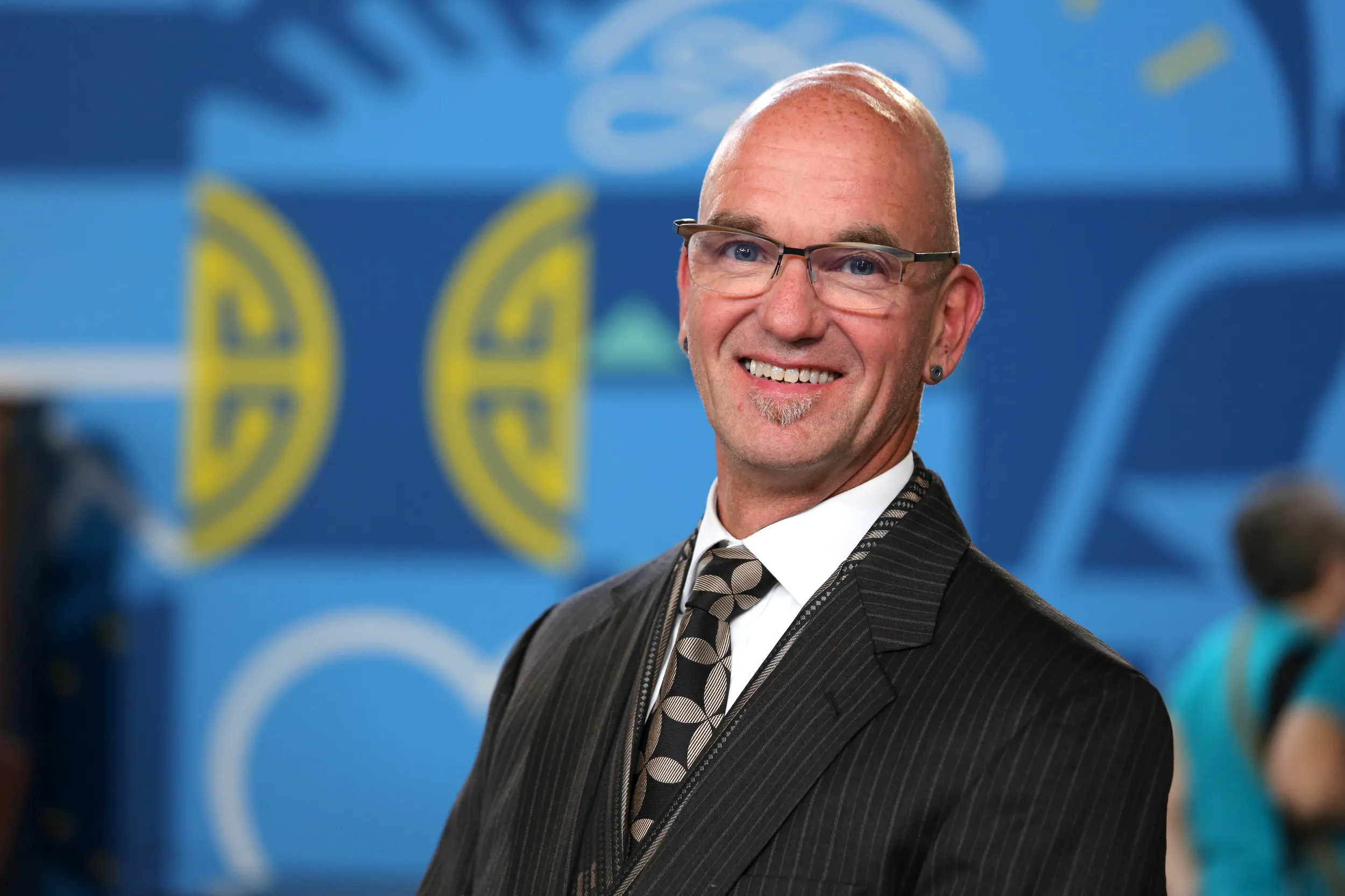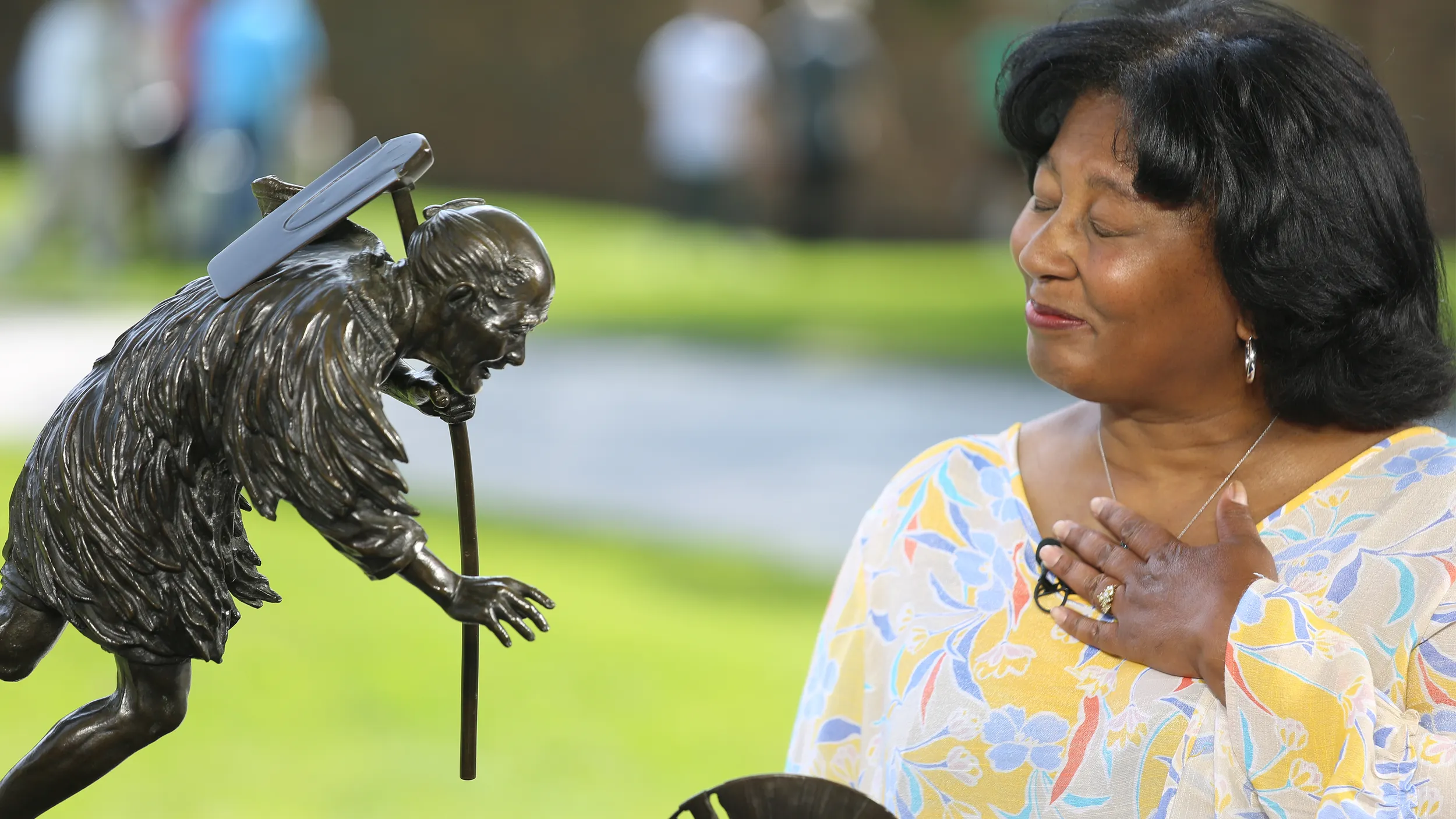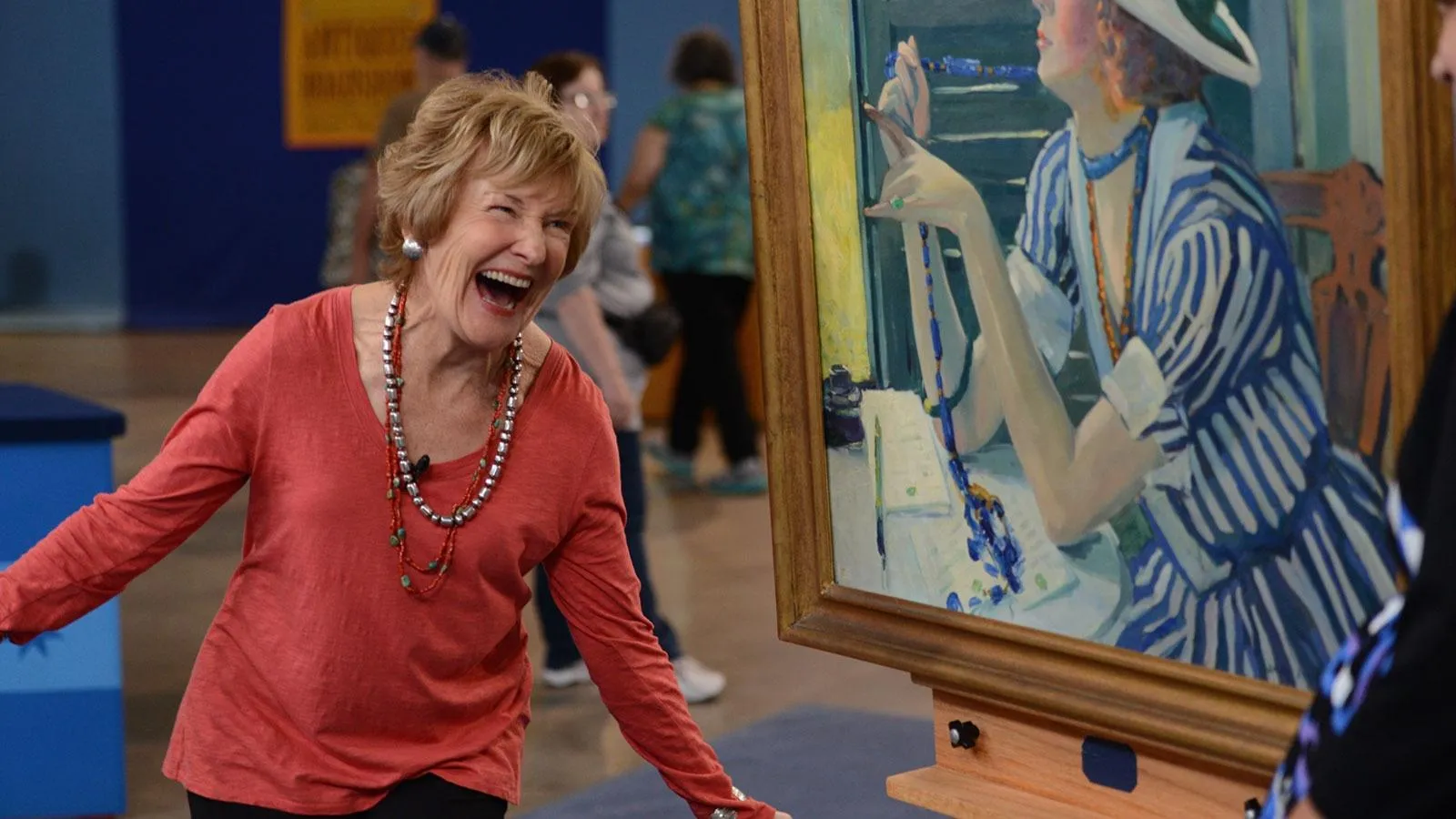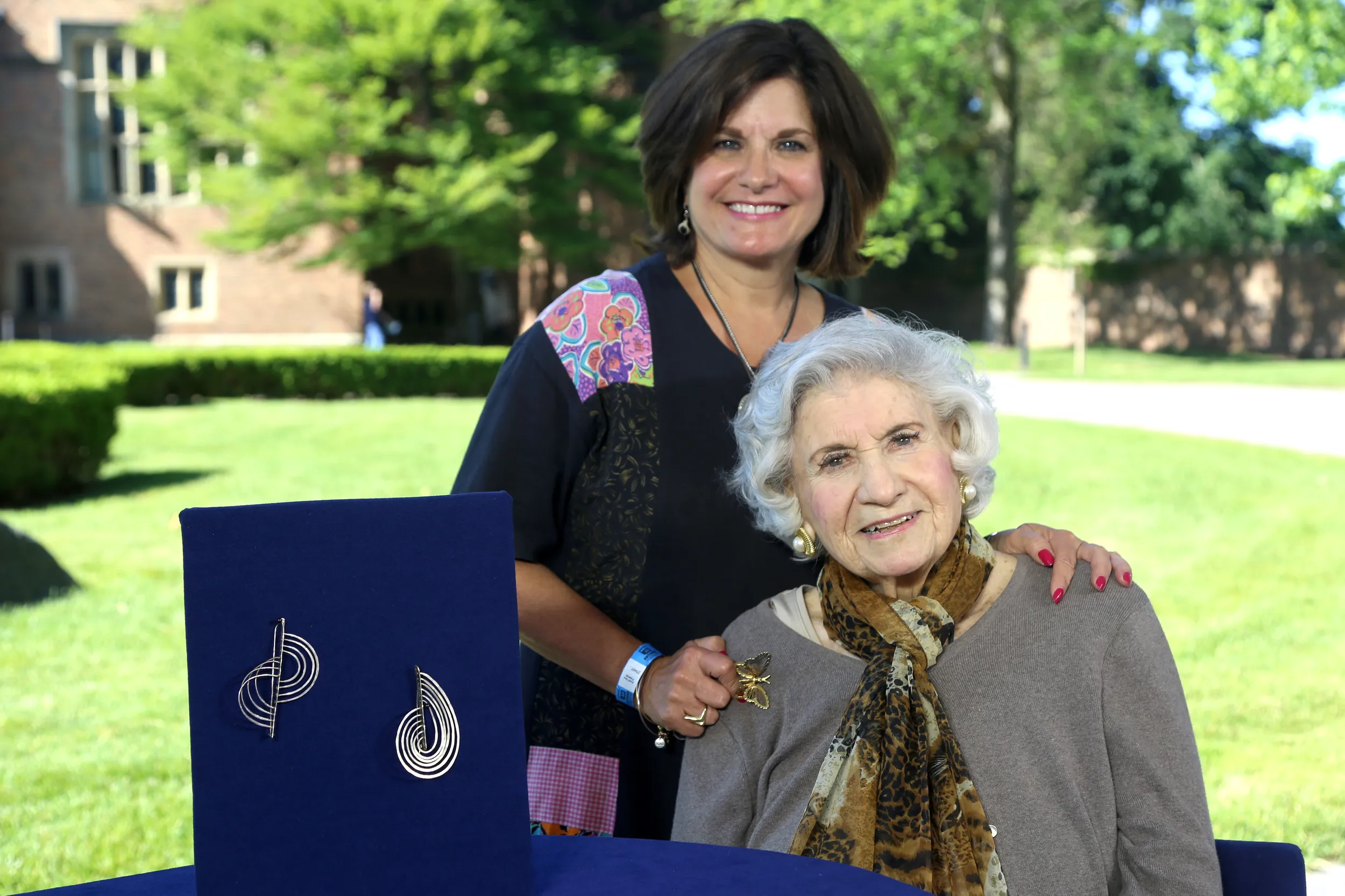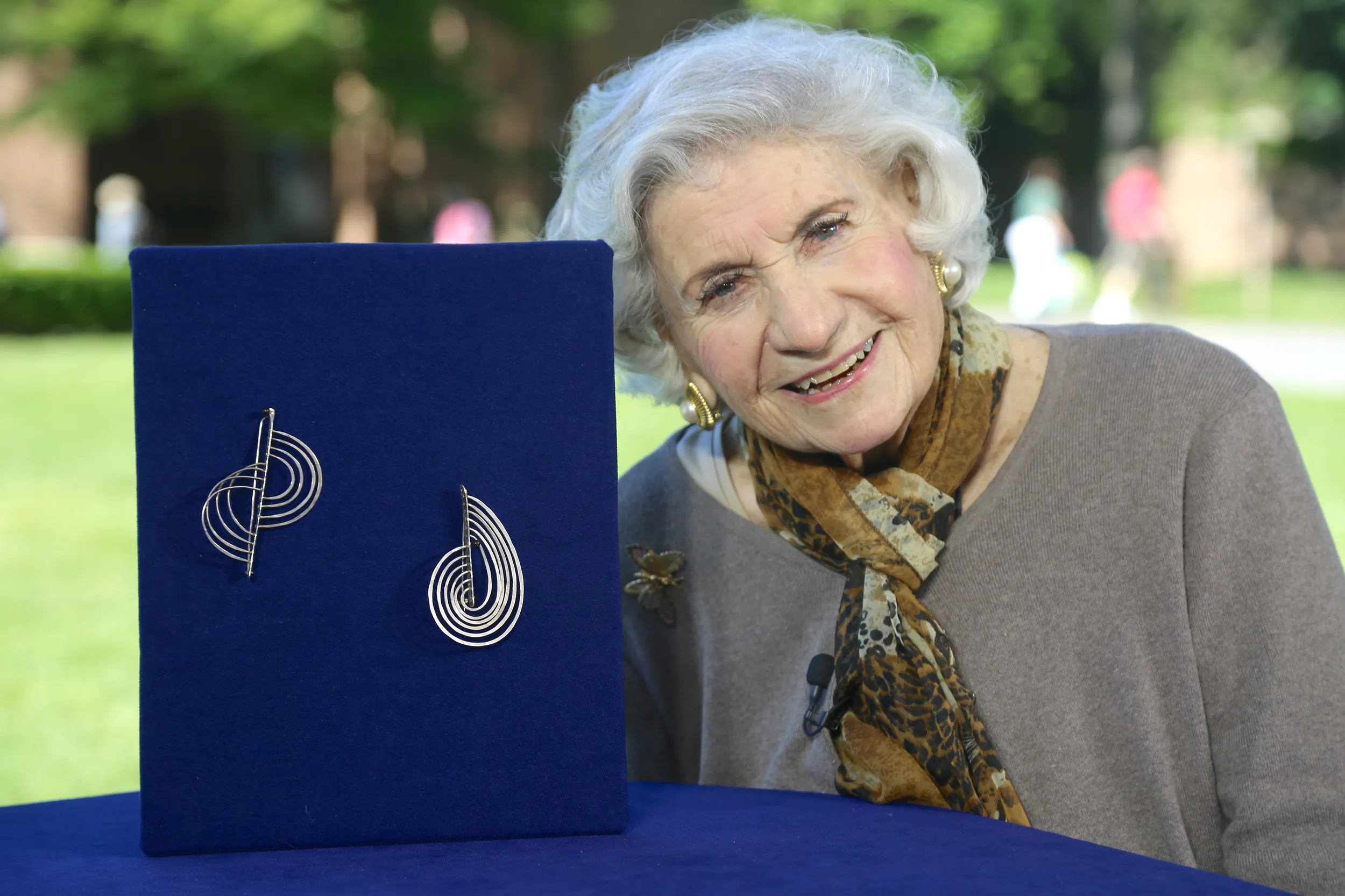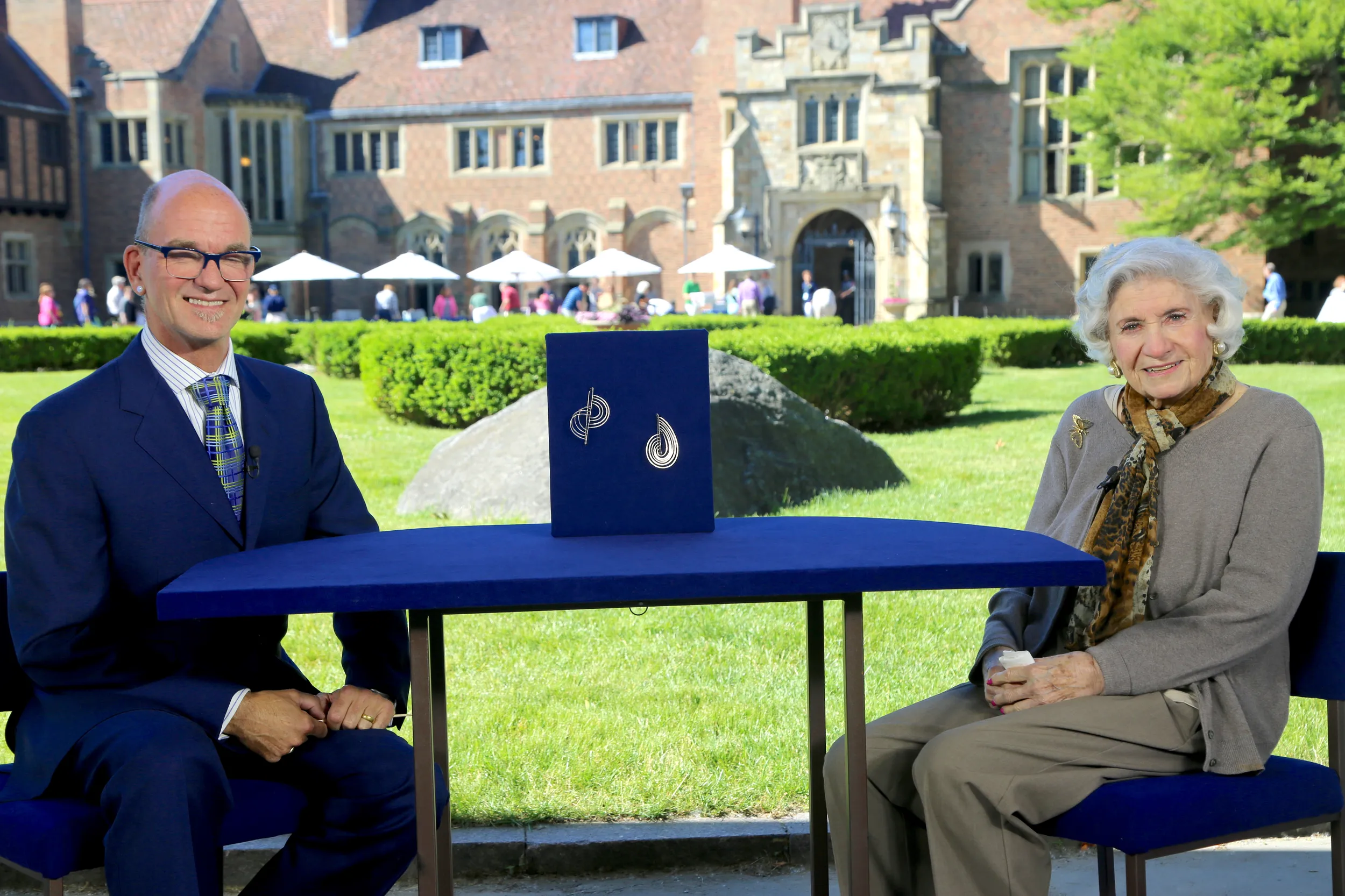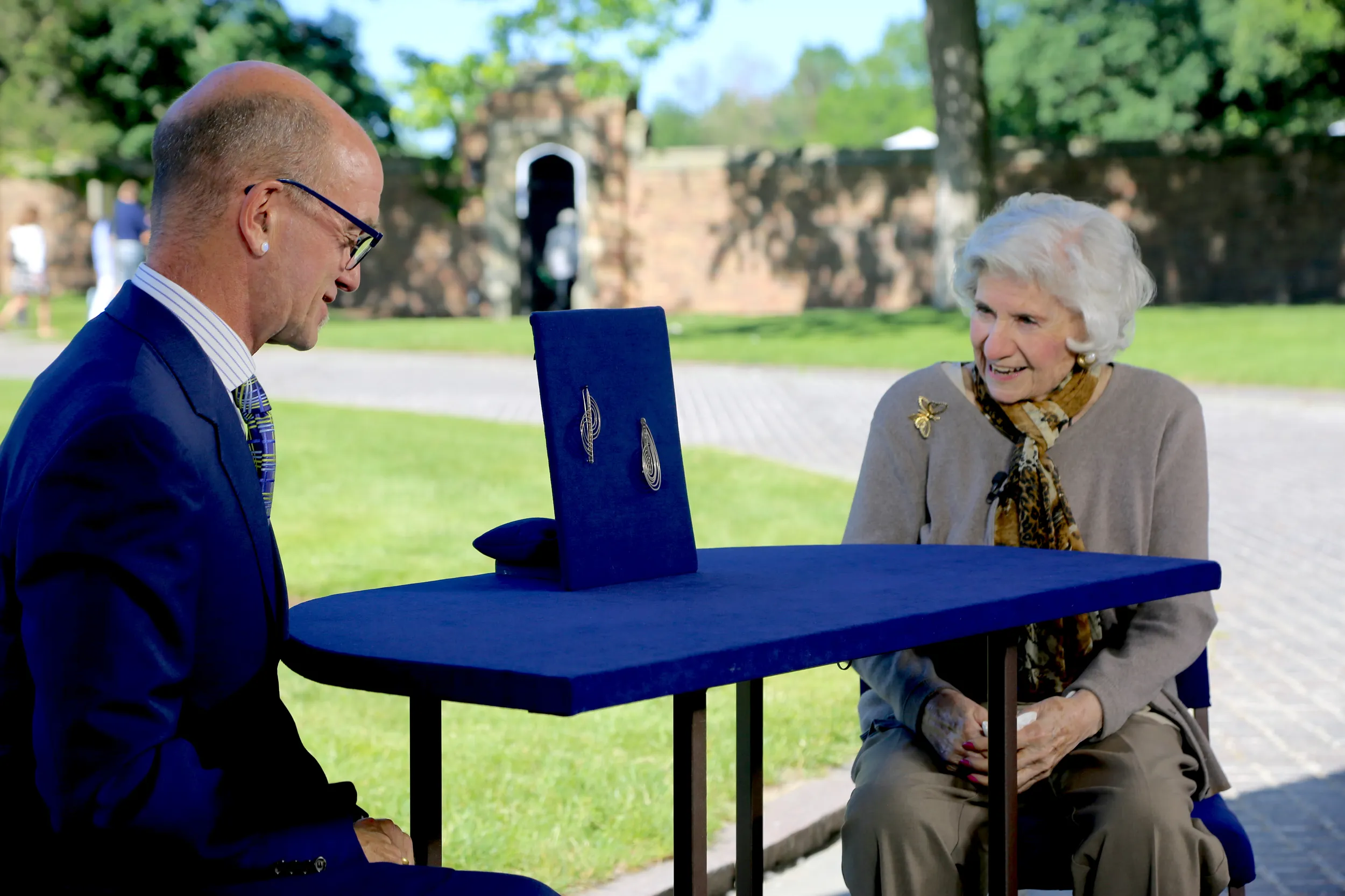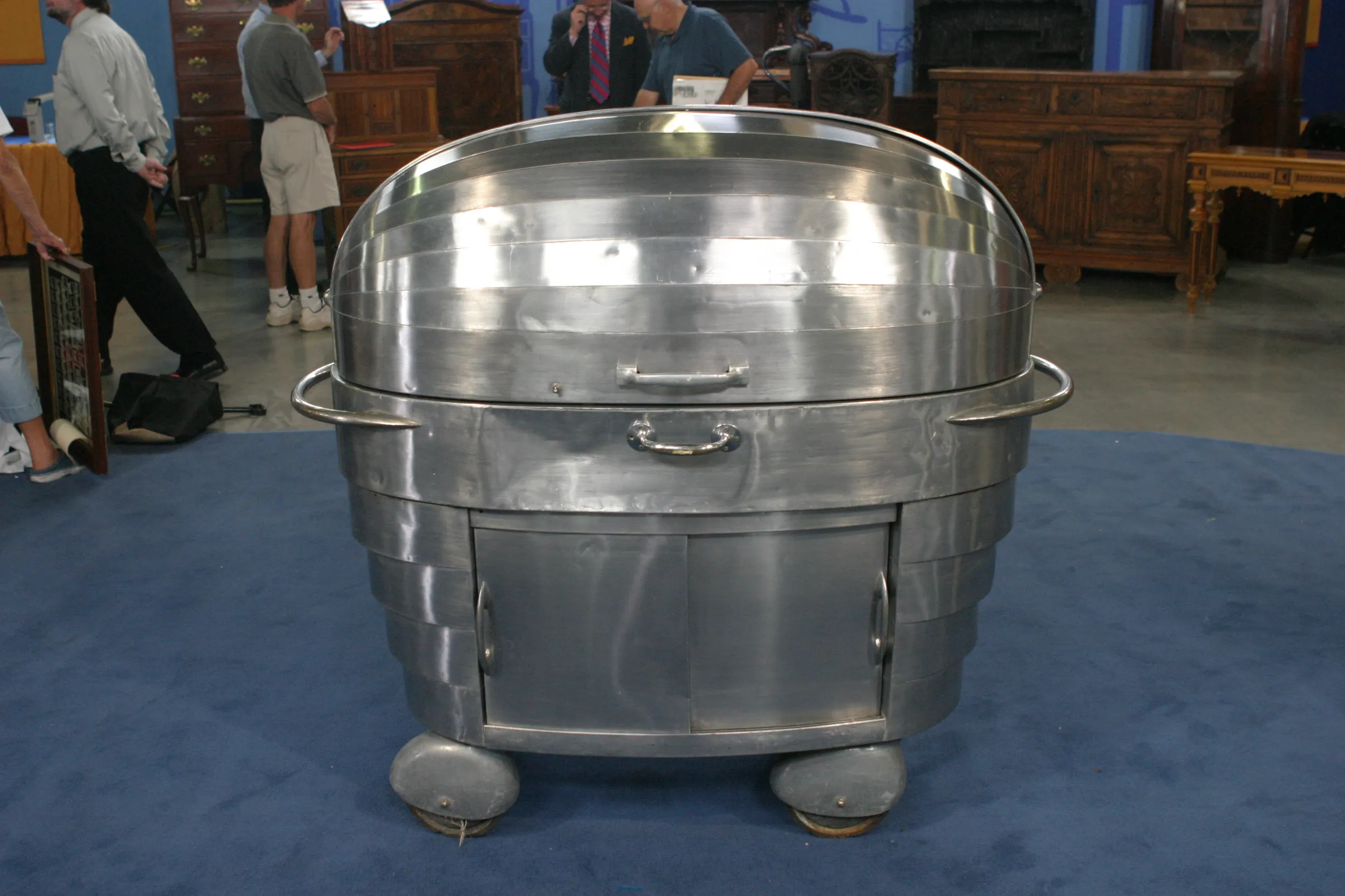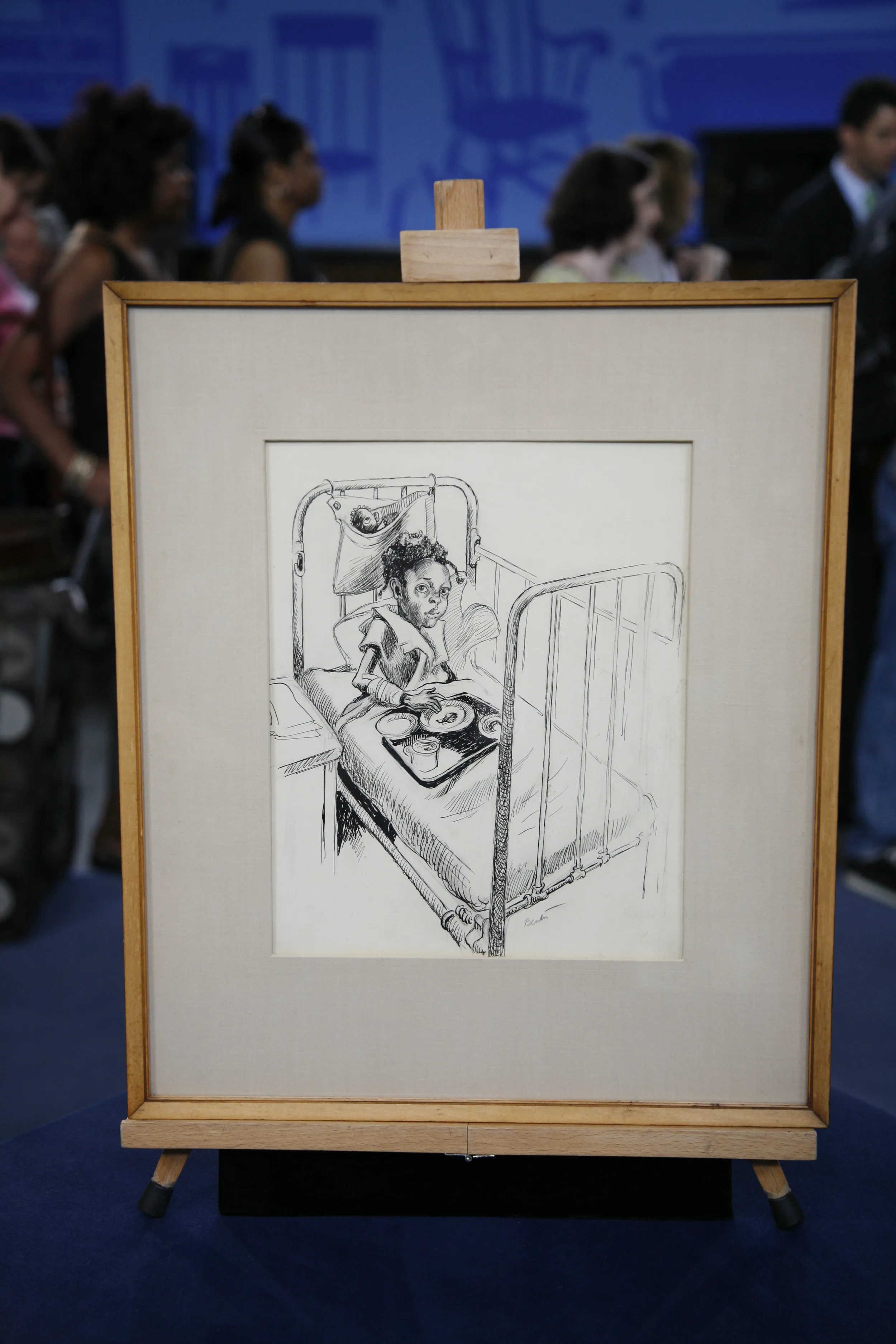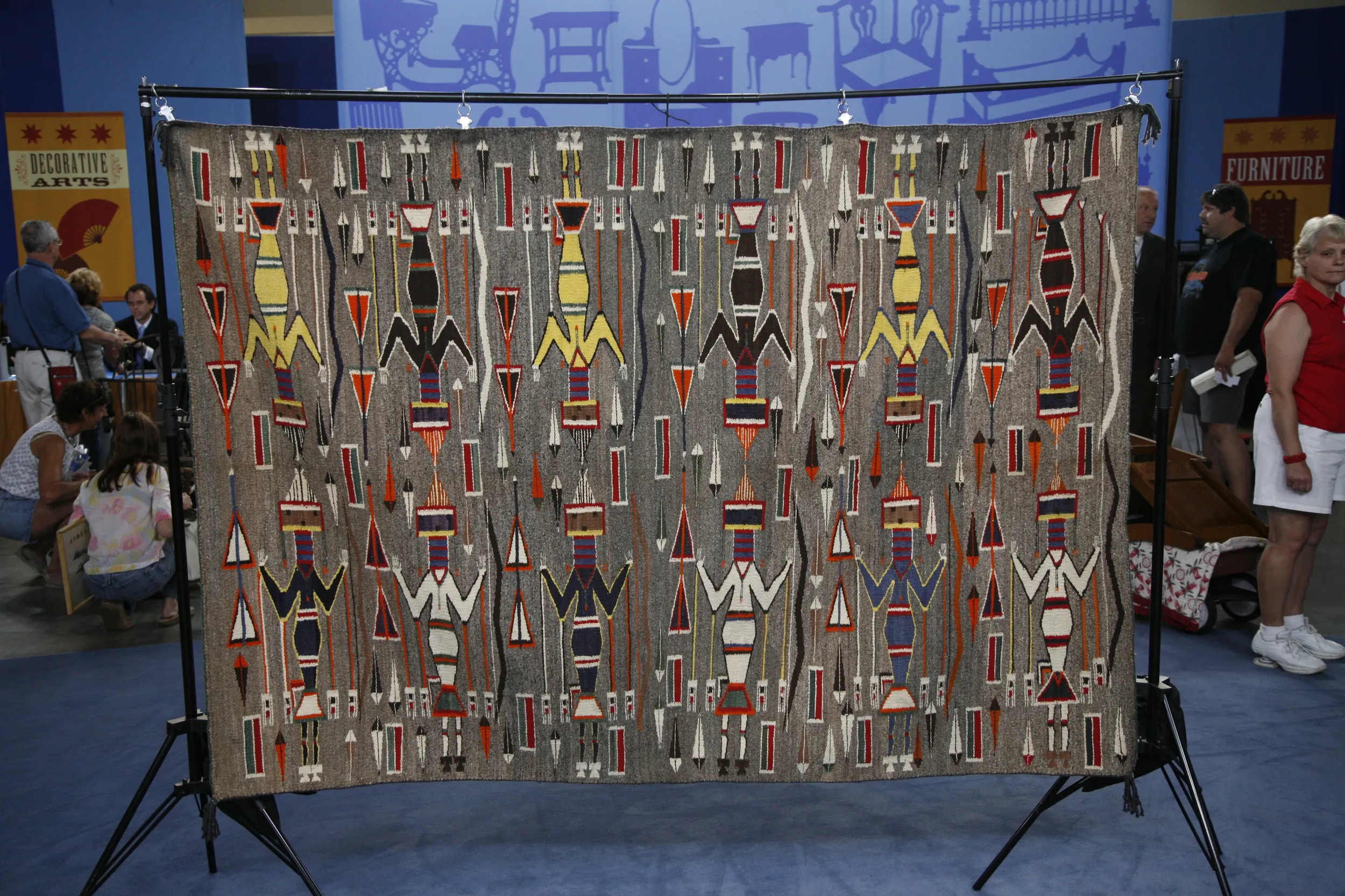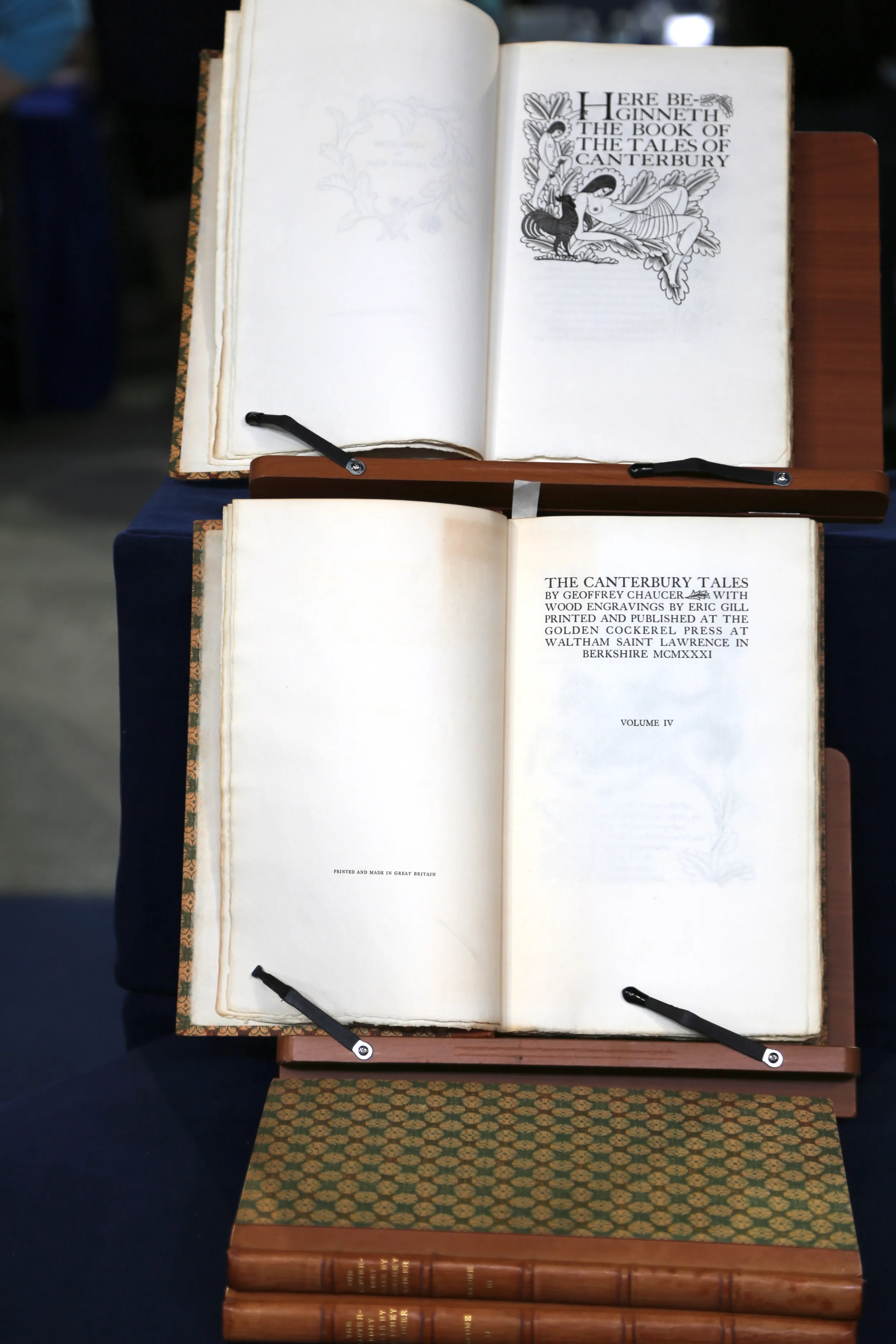GUEST: Harry Bertoia made those pins, and I think there were some of the very first that he made. My sister worked in the dorms where he stayed at Cranbrook. He gave her one and then he knew that she had two sisters. So three of us got the brooches, and I have those two.
APPRAISER: Do you remember about what year this was that you received them?
GUEST: Oh, dear, I must have been in my teens. I bet I must have been about 16 years old.
APPRAISER: Okay.
GUEST: Late '30s, I would say so.
APPRAISER: I understand your family had an interesting association with Cranbrook, as well.
GUEST: Correct. Mr. Booth owned Cranbrook. When he first married Ellen Scripps, they lived in Detroit. Then he came to Bloomfield Hills and bought
Cranbrook and built his home. It was a dairy farm when he bought it, and then he had to have it landscaped, and that's when my dad went to work for him. And actually, our family was the first family that had children that grew on Cranbrook.
APPRAISER: Who grew up on Cranbrook.
GUEST: So we were known as the second family of Cranbrook.
APPRAISER: Oh, wonderful.
GUEST: Yes.
APPRAISER: Well, a little bit about the brooches, they are by Bertoia. He was born in 1915. He came here to the United States when he was 15 years old, and came to Detroit. He enrolled in school in Detroit and that's where he first started to learn metalsmithing. And his early work, he was making jewelry. He was awarded a scholarship in 1937, and that's when he came to Cranbrook. And in 1939, he opened up the metal studio at Cranbrook. When we look at the work, everything is handmade. There's no solder, everything is done by either rivets or pins or tension fitting. And this is very much in keeping with the aesthetic of what we call modernist jewelry from this period. And also, when you look at the design motifs that these pieces have, the forged wire, the spiral motifs, this speaks very much of Bertoia's aesthetic that we will see him develop in the furniture that he later designs. And so these pieces are very early. He only made jewelry for a few years before going into other areas. During the war years, metal was being rationed. So the metal studio actually was not open very long once World War II happened. And so he then got into graphic design, and then he went into sculpture after the war. So his jewelry work is really quite rare and highly, highly collectible by people who like Bertoia's sculptures and design work. I would suggest writing down the family history and provenance of the pieces, since they're not signed. If these just showed up in a box of jewelry at a yard sale, most people wouldn't know what they were. If these were to come up in a auction house that has maybe modernist furniture, Bertoia sculpture, these as an addition to a Bertoia collection, each of these pieces, alone, would bring somewhere between $20,000 to $30,000.
GUEST: (whispers) Wow.
APPRAISER: So we have a total of $40,000 to $60,000 as an auction estimate. And now that you said there's a third one out there, I would probably say it's around the same value, as well.
GUEST: (whispers) Oh, my God.
APPRAISER: That's how rare these are. And how collectible.
GUEST: (aloud) Well, Hallelujah. It was worth the trip! It was so nice meeting you, Peter!
APPRAISER: Likewise, I can't believe that these came in.
GUEST: Oh, my God.
APPRAISER: And such a wonderful story. I really appreciate your sharing that with us, Rose.
GUEST: Well, Hallelujah. What a joy-- well, wait till I tell my other daughter-in-law about that other one. Oh, my God, I... Hey, I'm going to go home and celebrate.
APPRAISER: There, you should.
GUEST: Thank you, dear heart, I appreciate it.
APPRAISER: You're very welcome. Thank you for coming.
GUEST: Oh, my goodness! Never, never did I dream that. And do you know how many years I had these in a drawer?
APPRAISER: Oh, I'm sure.
GUEST: Oh, and... And you know when they were buying silver? I was going to sell them for silver, and then I thought, thought again, and I kept them-- hallelujah, am I glad I did.
APPRAISER: Good, good day.
GUEST: Thank you. Thank you, Jesus, I tell you, I did the right thing.
APPRAISER: You did the right thing,
GUEST: Oh, Peter, you made my day.
APPRAISER: Well, I'm glad, I'm glad.
